#sword reference
Explore tagged Tumblr posts
Text
sword misconceptions pt 1: longsword
Post series: shortsword | rapier | buckler | dagger | spear
so as I'm getting back into fantasy lit as a historical fencer, there are a lot of things I am noticing cropping up in swordfights that are inaccurate or flat out wrong. So i wanted to write a post for my fellow writers putting down a few things I've learned in 2.5 years of swinging the actual weapons around!
Disclaimer: i am not an expert. Additionally, many of the historical terms for weapons were not standardized (there was no "one" longsword/rapier/shortsword etc when we're talking about a weapon that existed for hundreds of years across an entire continent) so what I'm discussing under the cut is specific to the late medieval/early Renaissance European two-handed weapon with a simple hilt/crossguard and with a blade length around 3 feet -- what D&D calls the longsword, or in older editions the bastard sword (although if we want to get picky about it, bastard swords should have shorter handles than longswords -- but I wrote this post as a writing reference so names are beside the point. you can call the swords whatever you want in your story, anyway).
Misconception 1: longswords are heavy.
Older editions of D&D had these weapons at 6 pounds, which is about 2x too heavy. 5e has them at 3 pounds, which is exactly right. Your average longsword is between 2 and 4 pounds, and a well-made one will be balanced such that you barely feel it. Pound for pound, they are heavier than almost all one handed weapons (except some rapiers but we'll talk about that later), but between their balance and the fact you wield them in both hands, their weight is likely not going to be a prohibiting factor for most characters. Everyone who can pick up a wooden baseball bat can pick a longsword up and swing it. A weak or out of shape character will struggle for wielding it for lengths of time, though.
Misconception 2: longswords are slow.
You're 1) thinking of a zweihander and 2)zweihanders aren't slow, either, but we'll get to that later. Longswords, wielded properly in both hands, are lightning fast, with a skilled fencer that's opened their opponent's defense often able to land 2-4 hits before a director even registers the first hit and calls "halt". And there are two components to speed: actual velocity, and distance. Longswords are -- well, long. Even if you can't swing it as fast as a little knife, the fact that it's three feet long means you're closing to target much faster compared with a shorter weapon, because you don't have to do as much footwork to get into, or out of, striking range.
Misconception 3: you can wield a longsword in one or both hands.
I mean, you could. But a one-handed wield robs a longsword of a lot of its dexterity, grace, precision, and yes -- power. You want two hands on this thing. Your dominant hand goes closer to the crossguard and it's what generates your power and edge alignment. Your offhand on or near the pommel is where your dexterity and fine steering is. Switching or removing either of these hands feels weird and you are also way more likely to get disarmed just by trying to parry with one hand.
Misconception 4: swordfights are about dodging.
You have two realistic options when someone is swinging a longsword at you: parry or step out of range. You do not duck. You do not jump. You do not sway, roll, or do backbends. All of these things will 1) rob you of necessary structure to riposte, 2) leave you wide open for a renewed attack or remise, and 3) leave your most important tool for not getting hit -- your SWORD -- too far off target to help you. Yes, all of these things look super cool and may fit depending on your style and setting. But if you're going for realism, YOU PARRY.
Misconception 5: you can be fast or strong but not both.
Ok, this is more a pet peeve about martial arts in general but: you cannot be fast without a certain base amount of muscle. You CANNOT. Small people with no muscle are slow. They have to take huge, looping cuts to compensate for their lack of muscle and leave huge openings while they do it. Small people who do well at the sport are often very quick because they have to train the heck out of footwork to outwork bigger opponents, but that only comes with TRAINING. It's not a "small people are automatically dex builds" thing. And while big muscly guys are often slower, they also 1) have less distance to move to close to target, which makes them "faster" even if they are moving a tad slower and 2) they're also often fast as balls, so you can judge virtually nothing about an opponent based on their body type except for their reach. A good, big longsword fencer will often have really fast handwork because most don't do well in longsword fencing without speed.
Let me know if there are any lingering questions I missed! I may think of more later, but I hope this was helpful for now :)
#writing reference#writing#swordfighting#swords#historical fencing#fantasy writing#writing fiction#creative writing#longsword#hema#historical european martial arts#Martial arts reference#Sword reference
181 notes
·
View notes
Text
I DID IT!!!!
Sorta, I didn’t make the ENTIRE sword since that should be easy to enough to draw without any guidance, it’s just the sheath that gives me brain a scramblin
Took a bunch of screenshots in case anyone else needed them, there are probably a lot of repeats in here, sorry😅


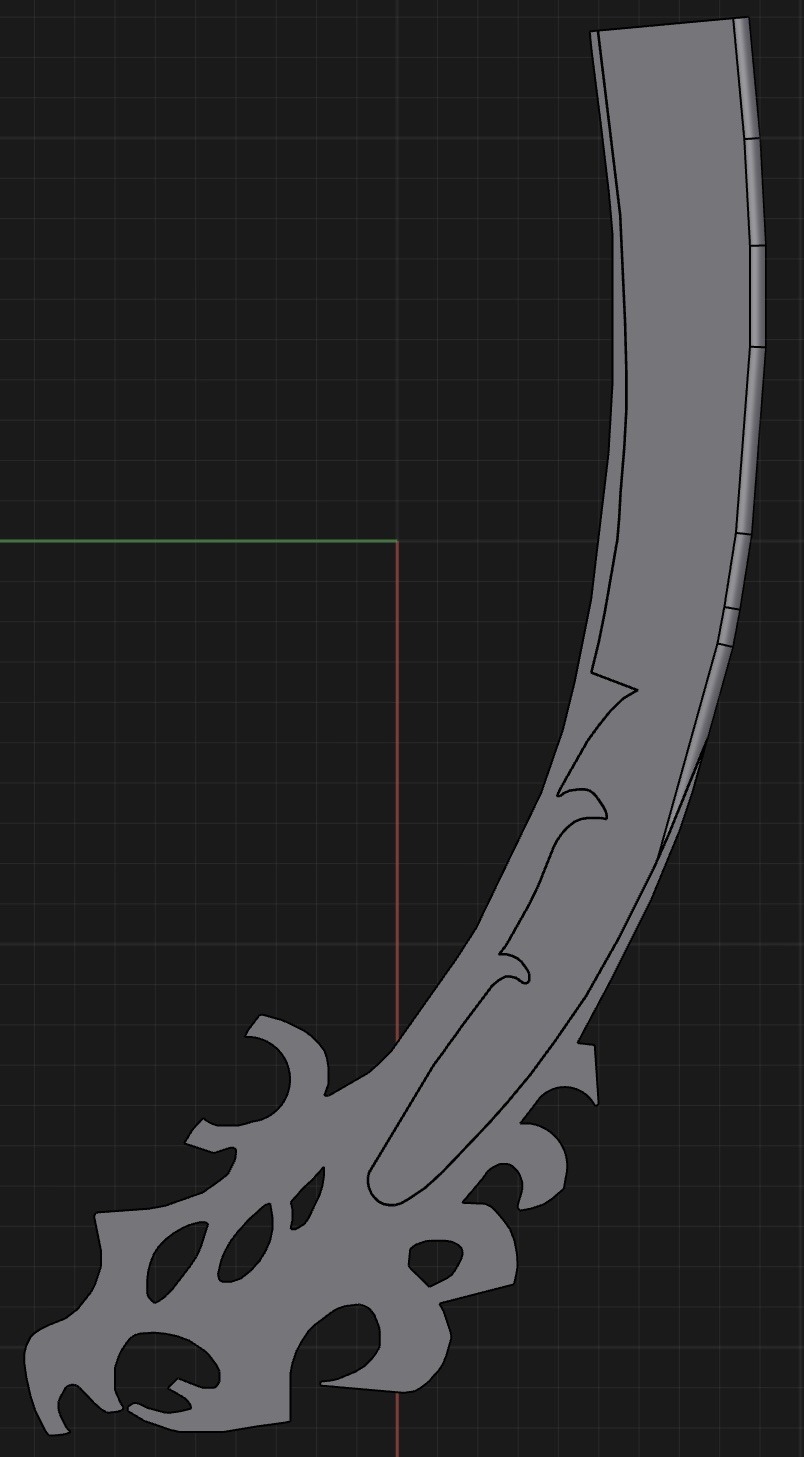
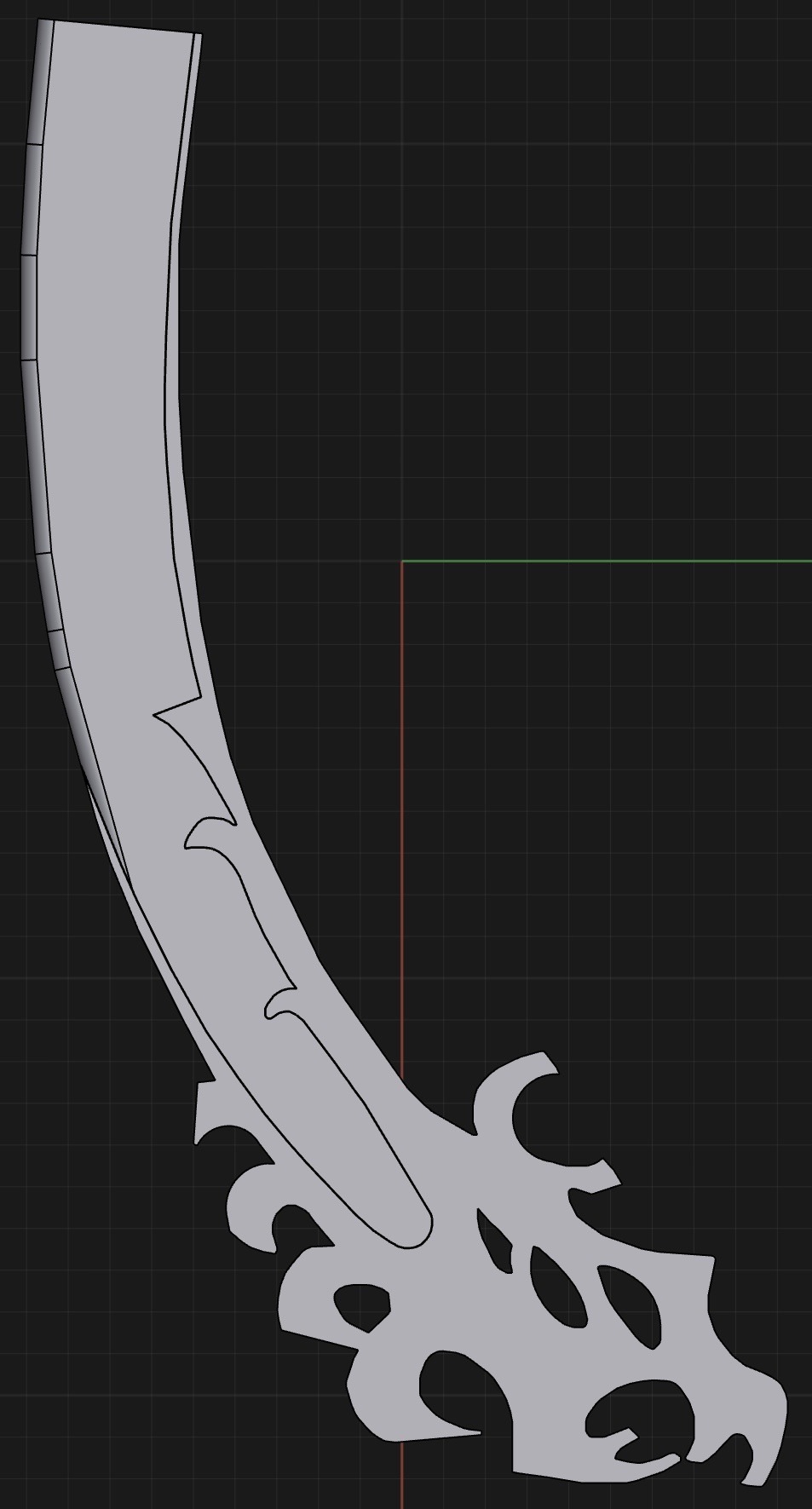
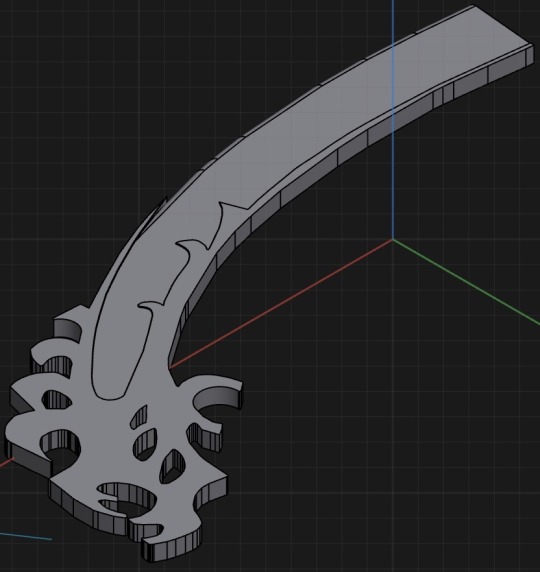

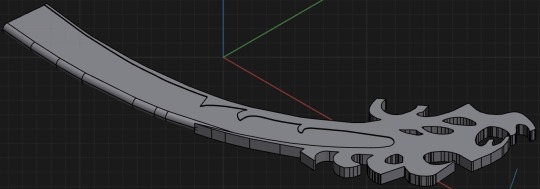
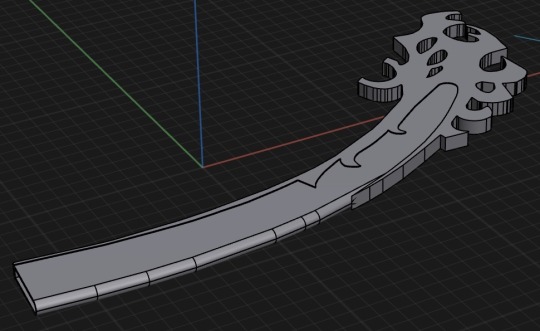
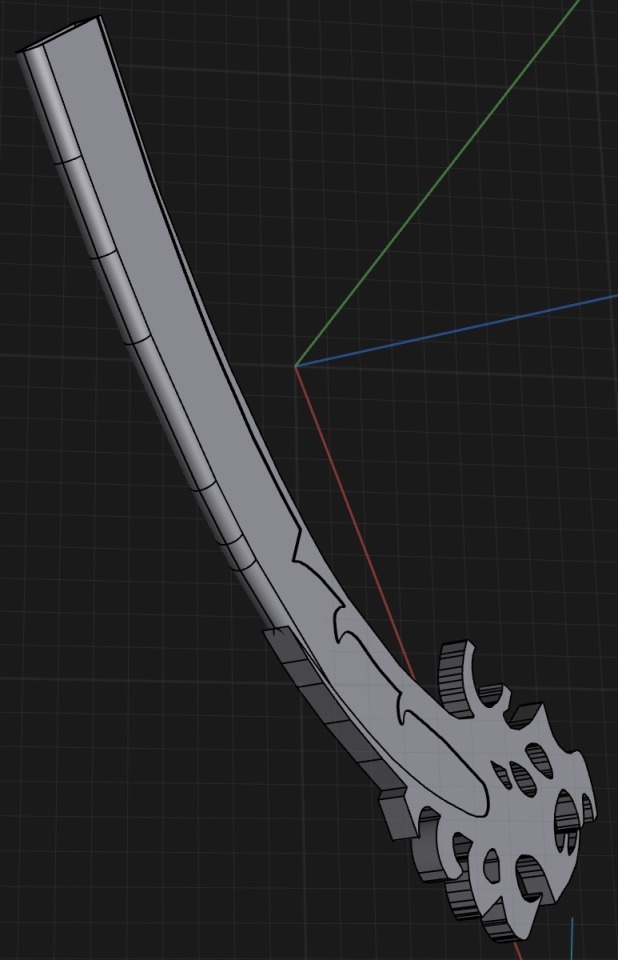
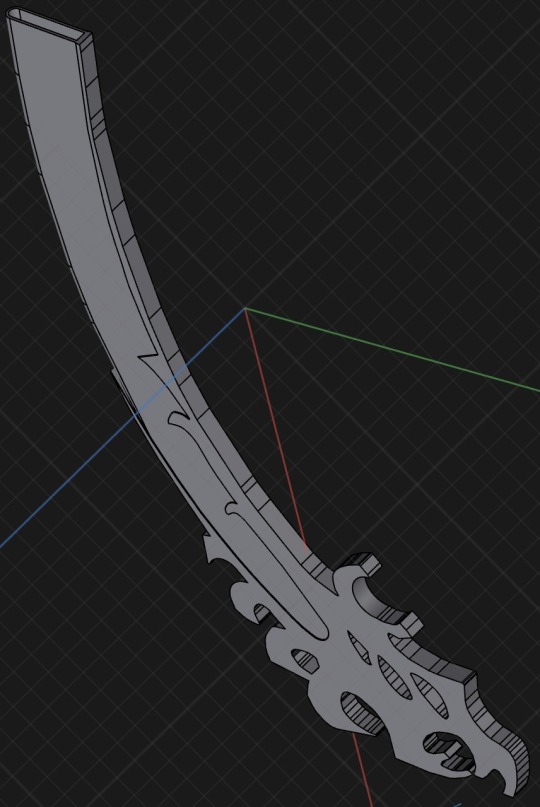
Forgive me if the screenshots are terrible, the app was making it hard to rotate😭
#my hand is relieved to know I’m finally done with this#ouch#I used the free version of shapr 3D#I think the app is easy to use I just kept overthinking it and made it harder 🥲#hope this is useful for anyone#3d art#3d model#sword#sword reference#art reference#treasure planet#n1ghtpers0n15#night 0’clock draws#art tips#cutlass
13 notes
·
View notes
Note
maybe someone holding a sword, if you'd like? your refs are really good btw!!

HI SORRY I HAVENT ANSWERED THESE IN A WHILE
I changed my style a bit recently so yeah it's a bit different
And thanks :D
8 notes
·
View notes
Text


picture of my sword for reference link. first image is my picture, second image is by GurkhabladeByKnife
Second image is good for color, if you ever need more reference images just message me
5 notes
·
View notes
Text

he's so crazy we can't take him anywhere 😭🤣
#credits to @velinxi bc i referenced her art for this#how atlus felt making the black mask design by far the most visually disturbing horrific thing witnessed by human eyes#what the FUCK is he wearing. what is that fucking OIL SPILL#didnt even BOTHER looking up a reference bc it was so hideous i didnt want to see it again.#“a persona user’s outfit reflects the manifestation of their image of a rebel” IS LOKI SUPPOSED TO BE A FUCKING ZEBRA??????????????#I CANT TAKE IT ANYMORE THEY DID HIM SO DIRTY. WE WENT FROM MARCHING BAND COSPLAY TO GOTH HOMELESS DRAG#ONLY GOOD THING ABT HIS OUTFIT IS THE SERRATED SWORD THAT COMES WITH IT#anyway i genuinely dont give a fuck if this isnt the canon design i refuse to draw his scrappy zebra print bell bottoms and flare sleeves#there is no way this bitch was the one behind all the mental shutdowns he looks like he cant even hold a sword 😭😭 stupid femboy twink😭😭#anyway i digress i loved watching his sanity rapidly deteriorate as he got the deer in headlights stare when he looked at you#anyway akechi flopped with this one 0/10 don't come back like this again#imagine dying in this fit not even the flames of hell would burn hotter than my unadultered rage 💀💀#persona 5#persona 5 royal#p5#p5r#goro akechi#akechi goro#lotus draws
8K notes
·
View notes
Text

Self awareness
#My art#four swords#four swords manga#Ummmm#fs link#Four swords link#four swords shadow#fs shadow#loz shadow#tloz shadow#shadow link#To be fair to shadow the same could be said of link#I drew this in an hour and a half… I have a problem#Also this is a Wallace and gromit reference lol
839 notes
·
View notes
Text

Be wary not of the beast, but the hand that tamed it.
(Read more dog training tips over at Tiger Tiger)
#tiger tiger#rakkatak ann#remy bonnaire#jamis arlesi#Shout out to sabertoothwalrus for compiling all the Jamis Dog comparisons. For references. Of course.#Jamis *is* Remy's loyal hound and we all know it! Everyone knows it! Except apparently Remy!#The court scene made me (and many others) start barking and snarling. But no one holds a candle to Remy Bonnaire.#Something about how both Remy and Jamis have parallel scenes where they defend the honour of someone they love.#Something about how we're primed to expect it to be Jamis who displays the most open outrage - but no!#Rat man better watch it. This time it was mostly barking but next time there will be biting involved.#And dear god. The look of pure thrill and adoration in Jamis's eyes when Remy pulls out his sword.#Bark bark woof woof that man would follow him to the ends of the earth and back and just be happy to be there.#The yearning and sheer force of affection these two have for each other is so well done.#Please. If you actually haven't read Tigers yet...I am no longer asking. I'm on the floor weeping about it.
2K notes
·
View notes
Text
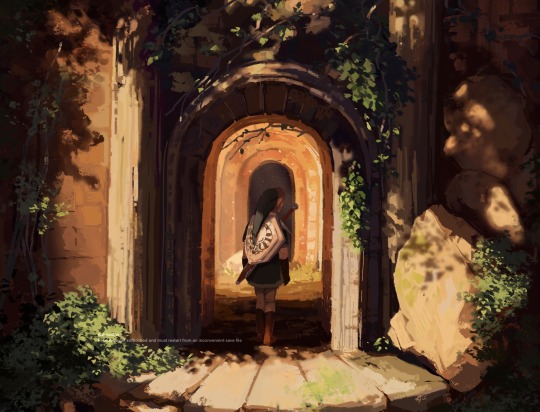
To the temple in the woods
#loz#legend of zelda#twilight princess#loz tp#link#that’s where we are headed#the fucking temple of time#now I know this is not what the way looked like in the game#and at this point link has the Hylian shield and master sword#I spliced a whole lot of references for the vibe the journey had#not accuracy#the in game sequence to discovering the temple and entering it to the music made me so nostalgic#I definitely cried a lil
12K notes
·
View notes
Text


Great idea Four
#linked universe#linkeduniverse#lu four#my art#lu legend#lu time#aint no one got time for plans#reference to four swords where you can throw your team-mate
4K notes
·
View notes
Text
Here are 543 images (1.5GB) of items at the Philadelphia Museum of Art arms and armor exhibit You're free to use them for anything, even commercially. I tried to focus on details not usually represented in available reference material
Here's a small sampling:




2K notes
·
View notes
Text

Classic Zelink weeeeee
I gave zelda a bow just cuz :>
#i did not look up a reference for links sword lol#the legend of zelda#zelda#tloz#link#zelda 1#art#fanart#my art#zelink#classic zelink#classic link#classic zelda#post game au#pgau
2K notes
·
View notes
Text
sword misconceptions part 2: shortsword
Post series: longsword | rapier | buckler | dagger | spear
so as I'm getting back into fantasy lit as a historical fencer, there are a lot of things I am noticing cropping up in swordfights that are inaccurate or flat out wrong. So i wanted to write a post for my fellow writers putting down a few things I've learned in 2.5 years of swinging the actual weapons around!
Disclaimer: i REALLY wanna emphasize this because in my last post someone decided to get cute (and wrong) about this. Historical terms for weapons were NOT STANDARDIZED. There as no "one" longsword/rapier/shortsword etc when we're talking about a weapon that existed for hundreds of years across an entire continent. And "shortsword" especially is not a specific term. As how you use weapons are governed more by their properties than their names, you can generalize many things that may not have historically been called "shortswords" under this term. There are like five or six different weapons which have distinct traditions in HEMA which match the fantasy game description of "shortsword". So I'm talking here about any one-handed, straight-bladed, double-edged sword with a (mostly) simple hilt/crossguard and a blade length typically between 2 and 3 feet. As "shortsword" is a generic and not a specific weapon descriptor, this covers what we in HEMA call arming swords, gladiuses, some messers, and probably a bunch of other types of swords I can't think of right now (the "simple hilt" rule is because I'm putting italian side swords and scotch broadswords in a different category. They feel really really different to wield than an arming sword/messer, and classing them as shortswords feels wrong).
Misconception 1: dual wielding shortswords is safe and effective.
When you dual wield, you really REALLY want different length weapons in each hand -- like a dagger in the offhand. Otherwise they cross over each other, get in each other's way, and generally slow you down and mess you up. We'll dual wield matching weapons for fun sometimes, but it strangely feels very unsafe and most of the time you have to resort to windmilling (getting stabbed in the chest as a result). Is this a skill issue? Maybe partially, but there's another reason to have a shorter weapon in your weaker hand, and it's physics. Maintaining parry structure and speed in a full size blade is really hard to do in your weaker, non dominant hand, so if you're going to hold an offhand weapon, you want it to be something that can't be easily wrenched or beaten aside, and instead something that has more leverage (like a short lil dagger!) so that you can turn aside incoming hits without the sword getting blasted aside. If you have a character that's really, truly ambidextrous they might be able to legitimately dual wield full length weapons, but most of the time this one just looks silly.
Misconception 2: since it's a one handed weapon, you shouldn't use your nondominant hand at all.
One of my favorite things about slashy one handed weapons like messer and arming sword is that your offhand still gets a job, but it has to diversify its job prospects! Most "shortsword" traditions aren't like modern fencing the way saber or rapier are, where you only use your sword arm. In messer, which is a very grappling-focused system, your offhand's job is to grab your opponent's arm, put them in joint locks, seize the opponent's blade after you've locked it in a bind, and otherwise be a nuisance. In arming sword and buckler, the offhand holds a lil shield, whose job then becomes to suppress the opponent's sword by shoving the buckler into a bind, protect your sword hand, parry afterblows, or deny entire target areas to your opponent. Most shortswords are NOT weapons designed to be used without backup from your other hand in some way. Don't just have your character hacking an arming sword around. Have them close distance, grapple hard, yank, push, armlock, trip. Shortswords don't grant the luxury of distance longswords can. You have to be up close and very personal.
Misconception 3: shortswords are faster than bigger weapons.
And in close quarters, they sure as hell ARE faster, because that's where longswordsget jammed up by proximity. But "close quarters", in this case, is "less than five feet apart". I'm talking CLOSE. Correct to: measured by speed of the hand, you can swing a shortsword more times per minute than a longer weapon. But a few things equalize that: their length, so you have to step in to score a hit, making them slower; and their relative lack of mass. This seems counterintuitive, but think of it this way: cutting a longsword around often just involves redirecting its velocity, which is already trying to continue forward due to its mass, in a different direction. Cutting a shorty around often involves restarting the whole cut: it's probably stopped against your opponent's weapon or bounced off, so you have to re-engage your swinging muscles to get it moving again. This is why when you watch sword and buckler or messer fighting, fencers will often avoid binding their blades at all costs and instead repeatedly disengage under or around each other's blades instead -- because in this situation, with good footwork, the sword actually FEELS its proper speed. A two-handed sword is going to be faster and more nimble than a one-handed sword in almost all cases UNTIL you get close enough that the longsword wielder can no longer move their sword properly -- which is well within the longsword's cutting range.
Misconception 4: shortswords are for weaker characters than longswords.
My beef with d&d 5e is that every sword SHOULD be a finesse weapon with a strength prereq to wield. Yes, shortswords ARE lighter than longswords, but only by about a pound. Add that to the fact that you can only use one hand to hold it and the fact that you're probably trying to swing it faster due to being practically in the other guy's teeth, I find short swords actually more physically taxing to wield than longswords. They burn out your dominant shoulder BAD and there's no way to relieve the weight on your arm without dropping your sword and probably taking a point to the chest. Yes, they are easier to pick up. They are harder to fence/fight with for extended lengths than longswords, at least to me.
That's all I can think for now! Hmu with any questions or confusions.
#writing reference#writing#historical fencing#historical european martial arts#hema#creative writing#shortsword#longsword#reference#Sword reference#Swordfighting#swords
70 notes
·
View notes
Text

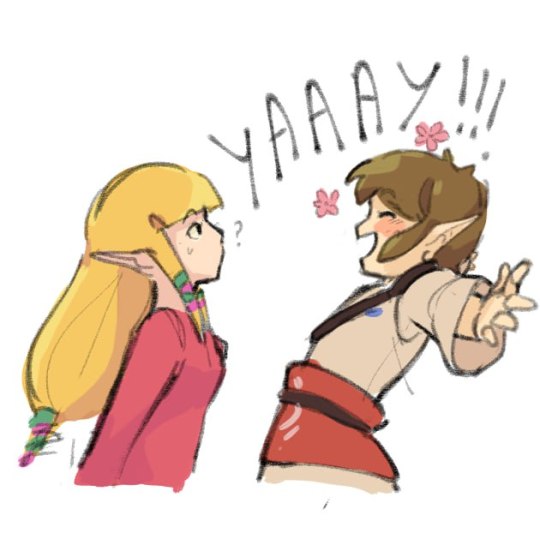
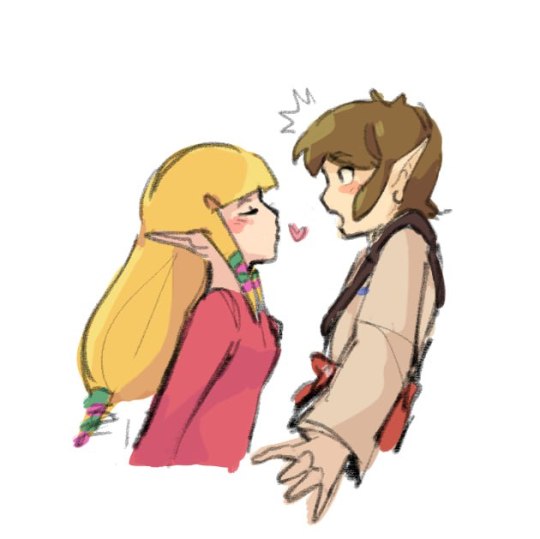
Canon, I think.
#yeah its a reference to that one tweet?tumblr post? cant remember#guy bout to be kissed and he throws his hands up all YIPEE#zelink#skyward sword#legend of zelda#SS zelink#RAAA I LOVE SS ZELINK#Lavdoods_vb
4K notes
·
View notes
Text

Robb and Theon in The Kiss of Judas
🎨 art by the talented @shripscapi
This beautiful and, in a way, breathtaking (at least in my opinion) artwork has been in my mind in concept for at least a year, and has been beautifully brought to life by Liesl. I have always felt that there was an almost biblical element to Robb Stark’s arc and his betrayal, by Roose Bolton, Walder Frey, and most pointedly, Theon Greyjoy (though the latter was done with less malice, but then again, that is not a prerequisite to betrayal). Robb Stark is a young king with good intentions, wanting the best for his people, but whether from greed, a want for revenge, or a wish for belonging, he was killed. His murder in of itself was at the hands of Roose Bolton and Walder Frey’s men, but being that those men were not particularly close to Robb nor was the king fond of them, the impact of their betrayal comes mostly from the shock and gore of it all, as well as the disregard for the revered tradition of guest right. Roose Bolton and Walder Frey have a direct hand in Robb Stark’s death, but Theon Greyjoy’s betrayal of his self-proclaimed “brother” has an indirect part in it too (it is to be noted, when I say betrayal, I do not mean to imply that Theon owes loyalty to the Starks, the family that took him from his home as a boy; I am not of the opinion he does, but Theon describes his own actions as betrayal, for personal loyalty to Robb). It is a matter of debate if Theon would have been able to return to Robb without being intercepted by his father if he had chosen to try and warn his friend that the Ironborn were preparing to launch an attack instead of allying with the North. What is not up for debate is that Theon’s capture of Winterfell weakened the North and its morale, bringing into question how they should move forward. On a more personal level, Theon’s claim of having murdered Robb’s younger brothers, Bran and Rickon, was devastating to the young king. The grief was what inadvertently led Robb to sleep with and ultimately marry Jeyne Westerling. While the Freys likely would have tried to betray Robb at some point, if Robb had followed their plan to marry a Frey girl, he would have probably lived for some time, at least to ensure a Frey/Stark heir. Theon does not have full responsibility for all these acts, but his betrayal certainly weakened Robb. Robb and Theon were close as Jesus and Judas were, despite the “kings” being warned or otherwise knowing better. Judas betraying Jesus is more impactful than if it had been another other apostle, just as, in my opinion, Theon betraying Robb is more impactful than Roose and Walder doing the same. On a more general note, while Robb did not die on a literal cross, I do not find it to be a coincidence that he died at a dinner. Robb’s story likely is purposefully inspired by biblical elements, along with being informed by various other historical figures, which I will elaborate on below.
With the iconography in my commission, my intention was for the piece to contain symbols that could pass as something you could find either in a Bible from times past or a Westerosi history book. Liesl’s art is beautiful and too polished, given modern methods, to pass for something found in a medieval manuscript, but it does look like it could be a descendent of such a thing. Medieval art is too archaic for my liking so I had purposefully set out with this compromise in mind, and Liesl’s art style was the closest to my vision. The weirwood is specific to Westeros and the in-world religion of Robb, but the halo is more biblical in nature. My intention was not to portray Robb as perfect or pure-intentioned, certainly not as selfless as the Christian depiction of Jesus. The iconography is meant to be more saintly in nature. Saint is not synonymous with perfect, anyone who knows an extensive amount about saints knows that there are saints canonized that weren’t particularly good people in their lifetime. My particular inspiration was Edward the Martyr, king of England (before William’s conquest). Edward died at the age of 16 under guest right. He was killed by a group of guards, his own people, on his stepmother’s estate. His death, too, was described as Christ-like. Here is a quote from a recount of his death:
“Those magnates had agreed among themselves a wicked plot: they were possessed of so damnable an intention and so murky and diabolical a blindness, that they did not fear to lay hands on God's anointed. Armed men surrounded him on all sides… The venerable king had with him very few soldiers, since he did not suspect anyone, trusting "in the Lord and in the might of His power” — it was just as the Jews once surrounded our Lord… They were seized by a single madness, an equal insanity ... The soldiers laid hold of him: one on his right-hand side drew him towards him, as if he wished to give him a kiss; another grabbed his left side firmly and gave him the death blow.”
Who does that sound like???
I love the idea of Robb as a figure similar to Edward the Martyr. He is a boy-king, and not particularly religious or impressive in feats (though Robb, having bested Tywin thus far in the story, is significantly ahead of Edward in terms of his military). Their death is tragic and they are exceptional, not for being great men, but for being innocent children thrust into a role and then martyred. Thus their stories turn to legends and they are seen as holy or saint-like in nature. Though Robb worshipped the Old Gods, due to his maternal family’s legacy and beliefs, it is not all that far fetched he could have a cult dedicated to him or be revered by the Faith of the Seven later on in Westerosi history.
Concerning other symbolism, I will acknowledge that Robb’s youth is exaggerated here to drive home the point of him being little more than an innocent child. He has not grown his beard yet and he is dwarfed by his furs. His clothes are meant to intimidate, make him look regal and intimidating. But really, it makes him look like a kid. Theon is portrayed as an adult, five years Robb’s senior. He is not meant to be malicious and his love for Robb is not false. He still betrays him all the same, that’s the tragedy of it. Robb knows he is king, knows he should keep a distance from Theon, many have told him. But yet he is informal here, having removed his glove so Theon can hold him. Robb is not relaxed, but that is not due to a lack of affection or some sort of stiffness around Theon, but rather to create an effect of a dead boy walking, rigor-mortis. Theon’s clothes aren’t meant to have any symbolism about him. I looked at all sorts of biblical art and depictions of the Kiss of Judas to decide what colors I wanted Theon to wear. I saw a lot of reds and whites, but I didn’t like that for Theon. I saw gold as well, but we didn’t want to default to House colors as that is overdone. The result was giving Theon the most luxurious clothes possible. Black was an expensive color and velvet an expensive fabric. His garb is more expensive and showy than the King’s himself. That is because Theon is exceptionally vain and Robb is not. Theon has all sorts of jewelry and even has pearls on his boots. Who does that???? It’s so gaudy and impractical, I love it for Theon. The pearls will eventually fall off and he will have wasted a fortune, but Theon does not think about practicality like that. He is a guarded person decorating himself with bits and baubles to give himself some sort of purpose or comfort that is not there. He subconsciously wishes to trick people into thinking he is secure and has value, when he feels no sense of belonging anywhere. No wonder his father bullied him.
My endless thanks and gratitude to Liesl @shripscapi. I love your work and appreciate you. Everyone should follow her account and check out more of her art because it is beautiful. She is a joy to work with and very thorough and dedicated. She has been very flexible and patient with me in the months making this and my past commissions. I have had nothing but wonderful experiences with her, she is one of my favorite and most respected artists in this community. And thank you for anyone who has stuck here and read this, I obviously a passion for this sort of stuff. I love to ramble and this is my hyper-fixation so I’m very excited about this.
#asoiaf#a song of ice and fire#robb stark#theon greyjoy#a game of thrones#a clash of kings#acok#agot#game of thrones#throbb#theonposting#biblical references#edward the martyr#jesus x judas#red wedding#the red wedding#a storm of swords#house stark#house greyjoy#this theon shit gets serious
562 notes
·
View notes
Text




1K notes
·
View notes
Text










Happy, free, and most importantly, using the Oxford comma with reckless abandon.
Masterpost | prev | next
#I’ve had the sword one in my storage for so long because I was waiting to watch that episode so I could get the proper pic#did not disappoint#it was a shining parody#the twin sisters from a series of unfortunate events were there#AND they threw in an evil dead reference <333#psych#psych 2006#psych tv#psych the show#shawn spencer#psych shawn#burton guster#psych gus#juliet o'hara#psych jules#carlton lassiter#psych lassie#shules#text post meme#shassie#psych text post
648 notes
·
View notes